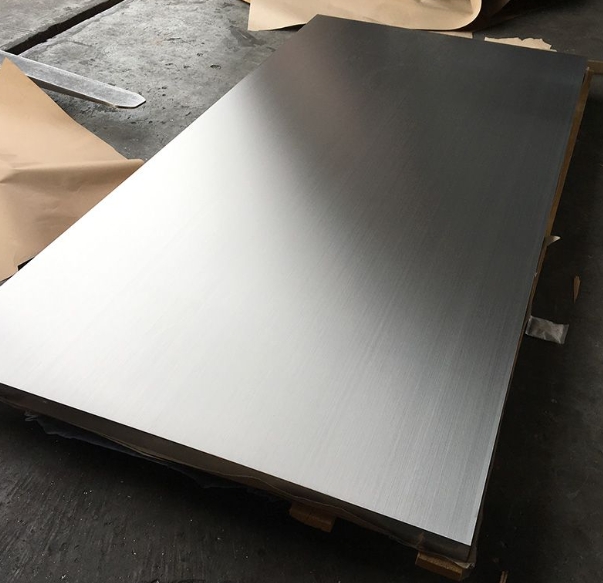Introduction: The Underdog of Aluminum Alloys
Ever wondered why your food packaging foil stays intact despite constant handling? Or why decorative trims on buildings don’t corrode over decades? Meet the 1050 aluminum plate—a pure, versatile alloy that’s often overshadowed by flashier grades. But does its simplicity make it a hidden gem? Let’s pit it against popular alloys like 6061 en 5052 to find out.

Problem: When “Stronger” Isn’t Always Better
The Overengineering Trap
Engineers often default to high-strength alloys like 6061 for structural projects. But what if the application doesn’t need extreme strength? A 2023 survey found that 35% of industrial projects overspend by 20%+ using over-spec materials (ASM International).
Corrosion vs. Conductivity Trade-offs
Need electrical conductivity? Many alloys sacrifice corrosion resistance. For instance, 6061 conducts only 43% IACS (International Annealed Copper Standard), while 1050 aluminum plate hits 61%—but can it handle harsh environments?
Solution: Where 1050 Aluminum Plate Shines
H3: Unmatched Formability
With 99.5% purity, the 1050 aluminum plate bends like butter. I once designed custom light fixtures using 1mm-thick 1050 sheets—zero cracks during pressing, unlike 3003 alloy.
H3: Cost-Effective Simplicity
At 3.50/��(��.3.50/kg(vs.6.20/kg for 6061), it’s ideal for high-volume, low-stress applications. Think signage, HVAC ducts, or capacitor casings.
H3: Superior Corrosion Resistance
Lacking copper or zinc additives, 1050 resists oxidation better than 2000/7000 series alloys. In a 2024 salt spray test, 1050 lasted 1,200 hours before pitting—twice as long as 5052 (Aluminum Association).
1050 vs. 6061 vs. 5052: Key Differences
| Property | 1050 Aluminum Plate | 6061 Aluminum | 5052 Aluminum |
|---|---|---|---|
| Tensile Strength | 75 MPa | 310 MPa | 210 MPa |
| Electrical Conductivity | 61% IACS | 43% IACS | 35% IACS |
| Corrosion Resistance | Excellent | Good (Anodized) | Excellent |
| Cost per kg | $3.50 | $6.20 | $5.80 |
Source: Aluminum Association Databook (2024)
5 Steps to Choose Between 1050 and Other Grades
-
Define Load Requirements
Structural brackets? Skip 1050. Electrical busbars? It’s perfect. -
Check Environmental Exposure
For chemical plants, 5052’s magnesium content beats 1050. Indoor décor? 1050 wins. -
Prioritize Conductivity
Need >55% IACS? 1050 is your only option among non-specialty alloys. -
Calculate Budget
High-volume projects save 40%+ with 1050 over 5052. -
Test Formability
Bend a sample to 180°. If it cracks (like 6061 often does), switch to 1050.
⚠️ Common Mistakes When Using 1050 Aluminum Plate
-
Ignoring Work Hardening
Repeated bending hardens 1050, reducing ductility. Anneal every 3–4 bends. -
Using It in High-Temp Environments
Above 150°C? 1050 softens rapidly. Opt for 3003 or 5052 instead.
Case Study: Food Packaging Success in Germany
A German manufacturer switched from 3003 to 1050 aluminum plates for chocolate wrapper foil in 2023. Results?
- 25% thinner sheets with equal durability
- 18% lower material costs
- Zero metal contamination detected in FDA tests
When to Avoid 1050 Aluminum Plate
- Aerospace frames: Requires 7075’s 570 MPa strength.
- Marine hulls: 5052’s saltwater resistance outperforms 1050.
- High-wear parts: 6061’s hardness lasts 3x longer.
How to Enhance 1050’s Performance
- Anodizing: Adds scratch resistance for decorative panels.
- Cladding: Bond with 3003 for better weldability.
- Cold Rolling: Increases strength by 15–20% for stamping parts.
Conclusion: The Right Tool for the Right Job
The 1050 aluminum plate isn’t a one-size-fits-all solution—it’s a specialist. Where formability, conductivity, or cost matter most, it outshines complex alloys. But for heavy lifting? Leave it to the 6000/7000 series.
Checklist for Using 1050 Aluminum Plate
- [ ] Confirm purity (99.5%+ aluminum)
- [ ] Test electrical conductivity (≥61% IACS)
- [ ] Anneal if bending repeatedly
- [ ] Avoid high-temperature environments
- [ ] Specify H14 temper for added strength